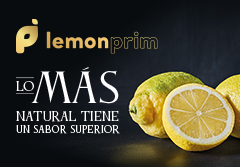The new scenario for the fruit and vegetable trade flows around the world, after the Russian invasion of Ukraine, is leading the agrifood consultant Paco Borrás to reflect on the reasons why Spain, Europe’s market garden, has not looked for other destinations
It might be that now, with an excess offer that could drown the entire European continent with the products that were directed towards Russia, it could be a good time to carry out an analysis of what these causes are, but above all, it could be the moment to reflect once and for all on ‘the protocol dilemma.’
Spain is a great food power and an exporter. But have we become too comfortable carrying out the easiest exports, the ones that cause the fewest setbacks, although at times, they are not even the most profitable?
To discover these ‘weaknesses’, first we must study what Spain exports outside the Old Continent. In the attached graph (1) there is an analysis of the averages of the five-year periods of this century showing the weight of overseas exports.
From the beginning of the 21st century, a rising trend may be observed, going from 1.72% to 4.22% between 2016 and 2020. In 2021, a clear decline may be seen; going back to 3.24% and this figure is clearly related to the global trade consequences of the pandemic, as well as the bottlenecks in the supply chain originated in the ports; a problem to which is added the shortage of shipping and the irregularity of the arrivals.
However, with an export volume of fresh fruit and vegetables of over 13 million tonnes, a figure of 3.24%, which in relative terms is small; in absolute terms has its relevance as this is somewhere between 400,000 and 550,000 tonnes.
Initially, it should not surprise us that the first positions are held by products with a long shelf-life that stand up well to long journeys overseas with distances that are in no way similar to the roads spanning Europe. It is also not strange that the categories of garlic and onions are the ones that benefit most from this overseas trade.
With all this, an analysis of the absolute figures provides us with highly significant data in the different product categories and also highlights some peculiarities. The percentages of apples and pears, on the one hand and those of garlic and onions, on the other, are breaking all the general trends for Spanish exports.
Accordingly, the muscle and energy of these two productive sectors must be pointed out which, in addition to not having it easy in the European Union, have known how to look for other, more distant markets, involving more complicated logistics, and they have succeeded.
In apples, with an average volume of 560,000 tonnes, the Spanish possibilities are very limited because the European Union maintains a production of around 10,400,000 tonnes, led by Italy, France and Poland. And both Italy and France traditionally have put their product on the markets as fruit with renowned quality. This is not the case of Polish apples, which have mainly been used for industry. In spite of this, and in this difficult context, Spanish apples have managed to take advantage of the gaps on the market, with the specific varieties and calibres demanded outside the E.U.
Pears are a similar case. Within the E.U., 2,200,000 tonnes are produced every year, led by Italy, Holland and Belgium. The 300,000 tonnes of this Spanish fruit, once the early harvesting factor has been lost, do not have much room in Europe.
As a whole, half of the Spanish apples and pears that are sold outside Europe are destined for Morocco, followed by Brazil, Colombia, Israel and the Arab Countries.
In onions, we find a similar situation, as the E.U. produces 7,500,000 tonnes, of which Holland produces 1,700,000, followed by Spain with 1,450,000, but the French, Italian, Germany and Polish producers make up an important part of the sales for European consumption. And as we have seen previously, Spanish onion operators have known how to find business opportunities in distant countries and, at the moment, the U.S.A., Canada and the Arab Countries are their most important destinations.
Regarding garlic, the situation is different, as the consumption is much lower and European production is 400,000 tonnes, of which 270,000 are Spanish produce. The international trade is controlled by China, which in 2020 reached exports of 2,254,000 tonnes, making up 80% of the worldwide total and it can use price to its advantage, although Spain holds second place with its 189,000 Tm. marketed, which only represent 7%, with positions overseas that are supported by sales to the U.S.A., Morocco, Canada, Brazil, Japan and Taiwan, amongst others.
The protocol dilemma
The particularity of the onion and garlic trade is that these two products do not have any export controls, an aspect that has been significantly taken advantage of by Spanish exporters.
On the other hand, the exotic fruit group has export percentages that are above average over the years analysed and, in this case, the most important destination is Morocco. It is obvious that Spain has become a great “exotic fruit hub”, not only as it is the only European producer country, but also as an important receiver of counter-season produce from the southern hemisphere, a factor that boosts it as an operator 12 months of the year.
However, citrus fruit, which are the ones that have the intrinsic characteristics for reaching distant destinations, have dropped positions and they are doing this at a time when, with the added difficulties of the Ukraine conflict, new markets are needed. In this case, sadly, the famous export protocols are keeping Spain out of important markets such as the U.S.A., Japan or India, countries to which it is not possible to export due to the strictness of their protocols. China was one of these important markets, which reached 40,000 tonnes the year prior to the pandemic, but the strictness of its protocol is preventing us from operating more there due to the high cost that it entails.
The UE trade relations are upheld by an intrinsic weakness that involves the fact that negotiations with third countries for importing to Europe are carried out in Brussels jointly for all the countries in the European Union as a whole; however, regarding exports, each country negotiates bilaterally, product by product, which is a clear disadvantage and means large amounts of red tape. This is the draconian way that some countries use to impose very strict protocols, which wouldn’t be as severe if the negotiations for imports and exports took place at the same time and in the same place. This bipolar negotiating system makes Spanish citrus fruit one of the worst-hit categories.
The last blatant case of this absurdity is the imposition of export protocols for citrus fruit and persimmons by Peru. Over this century, direct Spanish imports from Peru have gone from 10,912 tonnes in 2001 to 210,727 tonnes last year, with 95,000 tonnes of avocados, 22,000 of grapes, 15,000 of mangos, 47,000 of onions, 13,000 of asparagus and 3,760 of citrus fruit.
There is also the paradox that Spanish citrus fruit reaches all the countries in South America without any protocols, but one of the countries that has increased its sales most in Spain, Peru, is imposing a protocol on us. Is this just an absurdity or are we doing something wrong?












